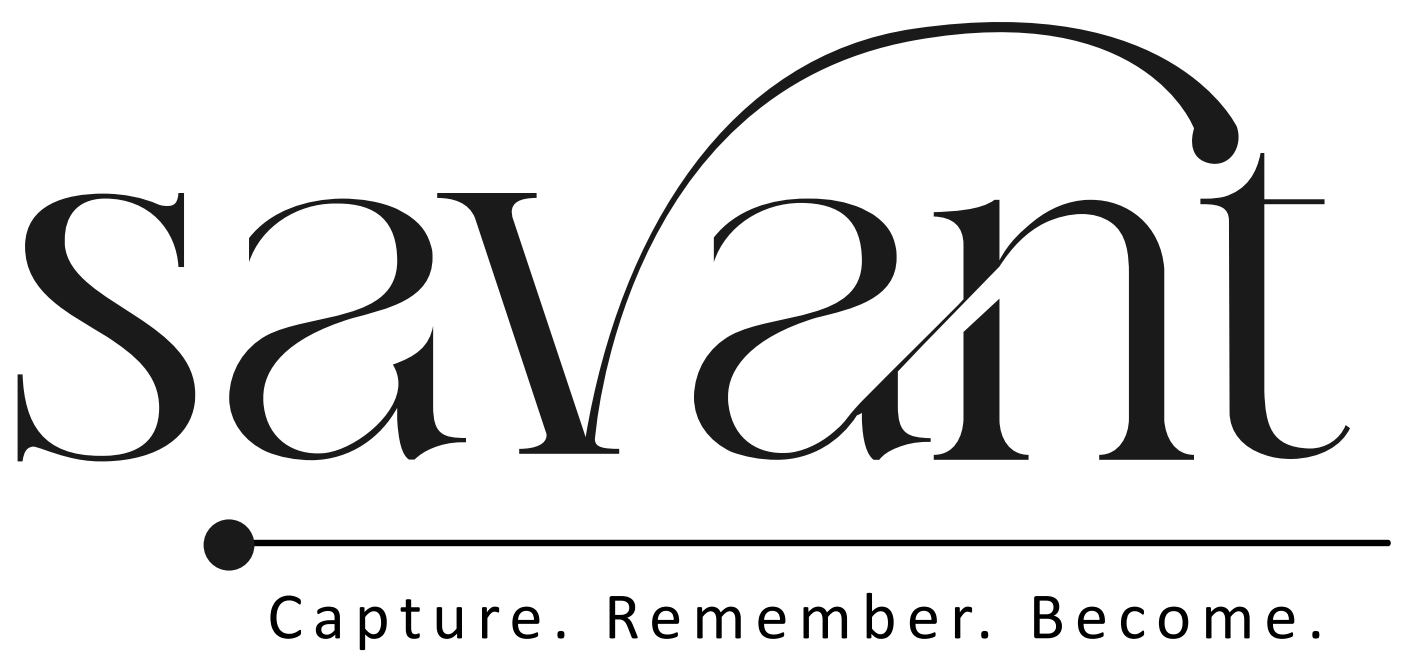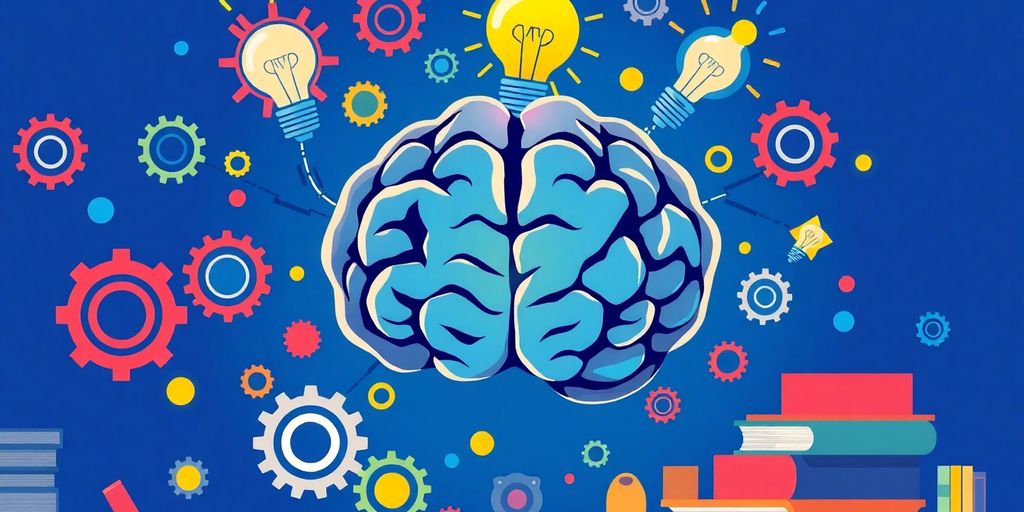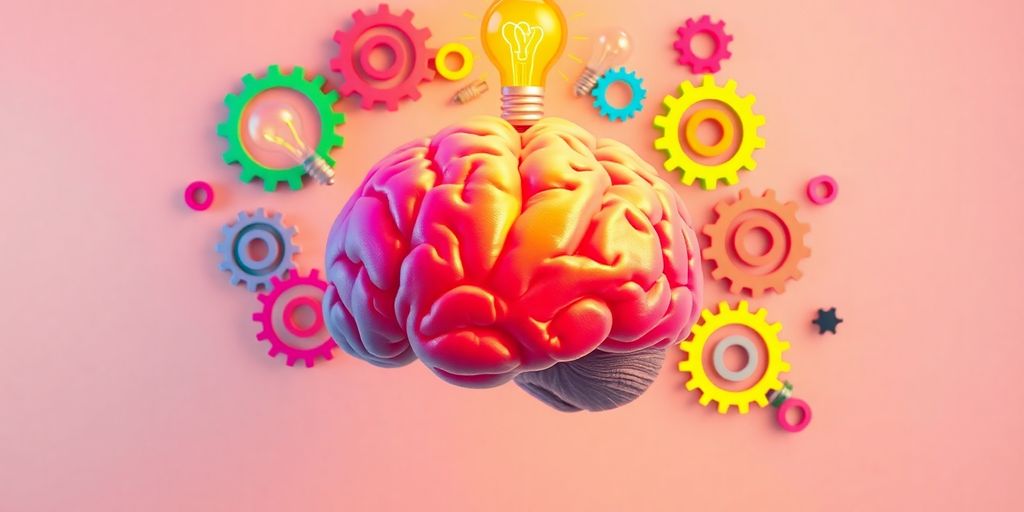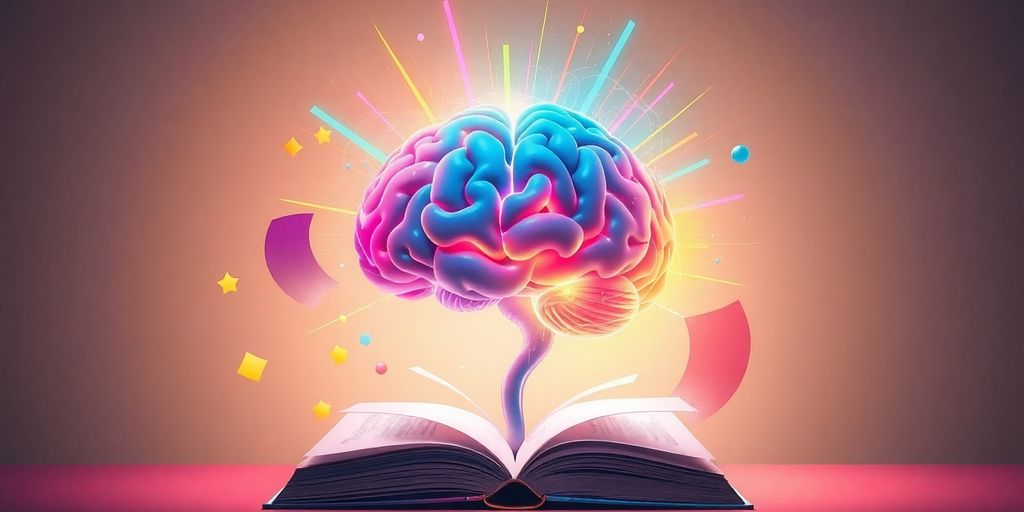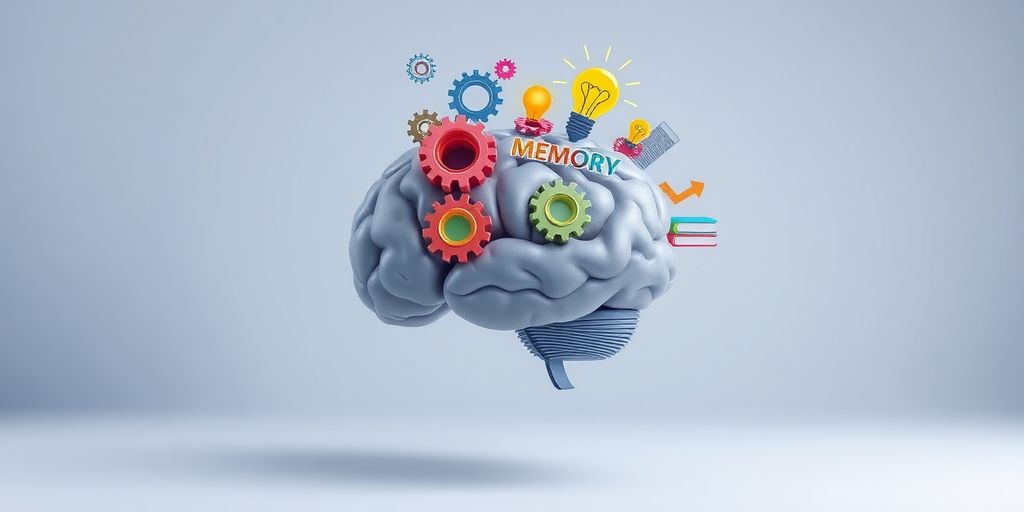Reading is a vital skill that opens doors to knowledge and personal growth. By mastering effective reading strategies, students can enhance their learning experiences and develop a lifelong love for reading. This article explores various techniques to improve reading skills, making the process engaging and enjoyable for learners of all ages.
Key Takeaways
- Establish a daily reading routine to improve fluency and comprehension.
- Engage in interactive read-aloud sessions to boost understanding and language skills.
- Use multi-sensory tools like visuals and audio to enhance learning and retention.
- Practice spaced repetition to strengthen memory and make learning stick.
- Adapt reading strategies to fit different learning styles for better engagement.
Building a Daily Reading Habit
Creating a daily reading habit can be a game changer for your learning journey. Setting aside time each day to read can boost your skills and confidence. Here’s how to make it happen:
Allocating Time for Reading
Try to carve out at least 20-30 minutes each day for reading. This time can be flexible based on your schedule. Here’s a simple breakdown:
| Time of Day | Suggested Duration |
|---|---|
| Morning | 20-30 minutes |
| Afternoon | 15-20 minutes |
| Evening | 30-45 minutes |
Consistency in Reading Practice
Making reading a regular part of your day helps it become a habit. Here are some tips to stay consistent:
- Choose a specific time each day.
- Keep your reading materials handy.
- Set reminders on your phone.
Benefits of Daily Reading
Daily reading has numerous benefits:
- Vocabulary Expansion: You’ll learn new words and phrases.
- Improved Comprehension: Regular reading helps you understand texts better.
- Fluency Development: The more you read, the smoother your reading becomes.
- Knowledge Acquisition: You’ll gain insights into various topics and ideas.
Remember, building a reading habit takes time, but the rewards are worth it! Start small and gradually increase your reading time.
By making reading a daily practice, you’re not just improving your skills; you’re also opening doors to new worlds and ideas. So grab a book and dive in!
Interactive Read-Aloud Sessions
Reading aloud can be a fun and engaging way to connect with stories! Interactive read-aloud sessions are not just for young kids; they can benefit readers of all ages. Here’s how to make the most of these sessions:
Time Allocation for Read-Alouds
Plan for read-aloud sessions that last between 10 to 30 minutes. Younger kids might need shorter sessions, while older students can handle longer discussions. Here’s a quick guide:
| Age Group | Recommended Time |
|---|---|
| Preschool | 10-15 minutes |
| Elementary | 15-25 minutes |
| Middle School | 20-30 minutes |
Encouraging Active Participation
To make read-alouds more engaging, encourage students to:
- Ask questions about the story.
- Make predictions about what will happen next.
- Share personal connections to the text.
- Discuss their thoughts with peers.
This active participation helps develop critical thinking and comprehension skills.
Expressive Reading Techniques
Using expressive voices and gestures can really bring a story to life! Here are some tips:
- Change your tone to match the characters’ emotions.
- Use hand movements to illustrate actions in the story.
- Pause for effect to build suspense.
Engaging students through expressive reading makes the experience enjoyable and memorable, helping them connect with the text on a deeper level.
Interactive read-aloud sessions are a fantastic way to nurture a love for reading and improve comprehension skills. So grab a book and start reading aloud today!
Utilizing Multi-Sensory Learning Tools
Incorporating Visual Aids
Using visual aids like charts, diagrams, and pictures can make learning more engaging. These tools help clarify complex ideas and make them easier to understand. For example, a simple chart can break down a process into clear steps, making it more digestible.
Using Audio Resources
Listening to audio resources, such as podcasts or audiobooks, can enhance understanding. This method caters to auditory learners and can make the material more relatable. You might find that hearing a story brings it to life in a way that reading alone does not.
Interactive Flashcards
Flashcards are a fantastic way to reinforce learning. Here’s how you can use them effectively:
- Combine different senses: Use images, sounds, and text on your flashcards.
- Engage actively: Quiz yourself or a friend to make it fun.
- Schedule reviews: Revisit your flashcards regularly to boost memory retention.
Multi-sensory learning not only makes studying more enjoyable but also helps you remember information better. By engaging different senses, you create stronger connections in your brain, making it easier to recall what you’ve learned.
The Power of Spaced Repetition

Understanding Spaced Repetition
Spaced repetition is a learning technique that helps you remember information better by reviewing it at increasing intervals. This method is super effective for improving memory retention! Instead of cramming all at once, you revisit material over time, which helps your brain store it for the long haul.
Implementing Flashcard Systems
One great way to use spaced repetition is through flashcards. Here’s how you can set it up:
- Create flashcards with questions on one side and answers on the other.
- Review them regularly, starting with the ones you find hardest.
- Gradually increase the time between reviews for cards you know well.
| Flashcard Review Schedule | Frequency |
|---|---|
| New Cards | Daily |
| Cards You Know Well | Every 3 days |
| Cards You Struggle With | Every day |
Benefits for Long-Term Retention
Using spaced repetition not only enhances memory but also fosters the development of higher-order skills, such as problem-solving and critical thinking. This technique helps you connect ideas and understand concepts more deeply, making learning more enjoyable and effective.
Regularly revisiting material helps you build a strong foundation for future learning. It’s like planting seeds that grow over time!
By incorporating spaced repetition into your study routine, you’ll find that learning becomes less stressful and more rewarding. So, give it a try and watch your knowledge flourish!
Active Reading Strategies
Active reading is all about engaging with the text in a way that makes it stick in your mind. It’s not just about reading the words; it’s about having a conversation with the material. Here are some effective strategies to help you become an active reader:
Skimming and Scanning Techniques
- Skimming: This is like a quick preview. Look for headings, bold words, and summaries to get the main idea without reading every word. It’s a great way to save time!
- Scanning: This involves searching for specific information. If you need to find a date or a name, just move your eyes quickly over the text until you spot what you need.
Annotating and Note-Taking
- Highlighting: Use a highlighter to mark important points. This helps you focus on key ideas.
- Margin Notes: Write your thoughts or questions in the margins. This keeps you engaged and helps you remember what you read.
- Summaries: After each section, write a quick summary in your own words. This reinforces your understanding.
Questioning and Predicting
- Ask Questions: While reading, jot down questions that pop into your mind. This keeps your brain active and curious.
- Make Predictions: Try to guess what might happen next in the text. This makes reading more exciting and helps you think critically about the material.
Remember, active reading is a skill that takes practice. The more you do it, the better you’ll get at understanding and remembering what you read!
Phonics and Word Study
Importance of Phonics Instruction
Phonics instruction is crucial for young readers. It helps them understand the connection between letters and sounds, making it easier to decode words. Discover the essence of phonics instruction! This systematic approach not only aids in reading but also builds confidence in students as they tackle new words.
Interactive Word-Building Exercises
Engaging students in interactive word-building exercises can make learning fun! Here are some activities to consider:
- Phonics games: Use games that focus on letter sounds and blending.
- Manipulatives: Incorporate letter tiles or magnetic letters for hands-on learning.
- Group activities: Encourage teamwork in creating new words together.
Sight Word Practice
Sight words are essential for reading fluency. Regular practice helps students recognize these words quickly, enhancing their overall reading skills.
Regular phonics and word study practice empower students to read with confidence and accuracy.
Benefits of Phonics and Word Study
- Decoding skills: Students learn to sound out unfamiliar words, boosting their reading fluency.
- Vocabulary expansion: Phonics helps students connect new words to known ones, enriching their vocabulary.
- Spelling proficiency: Understanding sound-symbol relationships aids in correct spelling.
- Reading comprehension: A solid phonics foundation allows students to focus on understanding the text rather than just decoding it.
By incorporating these strategies, educators can create a supportive environment that fosters a love for reading and enhances learning outcomes!
Enhancing Comprehension Skills
Strategies for Before Reading
Before diving into a text, it’s helpful to set the stage for understanding. Here are some strategies:
- Preview the text: Look at headings, images, and any highlighted terms.
- Ask questions: What do you want to learn from this reading?
- Activate prior knowledge: Think about what you already know about the topic.
Techniques During Reading
While reading, keep these techniques in mind to boost your comprehension:
- Annotate the text: Write notes in the margins or highlight key points.
- Visualize: Create mental images of what you’re reading.
- Summarize: After each section, pause and summarize what you’ve learned.
Post-Reading Activities
After finishing a text, it’s important to reflect and reinforce your understanding:
- Discuss: Talk about the text with a friend or family member.
- Write a summary: Put the main ideas into your own words.
- Create a mind map: Connect ideas visually to see how they relate.
Engaging with a text actively can make a huge difference in how well you understand it. The more you interact with the material, the better you’ll grasp it!
By using these strategies, you can enhance your comprehension skills and make reading a more enjoyable and effective experience. Remember, practice makes perfect!
Adapting to Different Learning Styles
Understanding how to adapt to different learning styles can make a big difference in how effectively you learn. Everyone learns differently, and recognizing these differences can help you find the best strategies for yourself and others.
Visual Learners
Visual learners grasp information best through images, diagrams, and charts. Here are some tips to engage them:
- Use colorful charts and graphs to present data.
- Incorporate videos that illustrate concepts.
- Encourage drawing or mind mapping to organize thoughts.
Auditory Learners
Auditory learners thrive on listening. To support them:
- Use discussions and group talks to share ideas.
- Incorporate audiobooks or podcasts related to the material.
- Encourage reading aloud to reinforce understanding.
Reading/Writing Learners
These learners prefer written words. To help them:
- Provide plenty of reading materials and articles.
- Encourage note-taking and summarizing information.
- Use written assignments to reinforce learning.
Adapting your approach to fit different learning styles can lead to better understanding and retention of information.
By engaging with the four different types of learning styles, you can discover strategies that work best for you and others, leading to more effective training outcomes!
Creating a Conducive Reading Environment
Creating a great space for reading can really boost your learning experience. A comfortable and inviting environment makes reading enjoyable! Here are some tips to help you set up the perfect reading spot:
Choosing the Right Reading Space
- Find a quiet area: Look for a place with minimal noise and distractions.
- Good lighting: Make sure your reading area is well-lit, whether it’s natural light or a good lamp.
- Comfortable seating: Choose a chair or spot where you can sit comfortably for a while.
Minimizing Distractions
- Turn off notifications: Silence your phone or any devices that might interrupt your focus.
- Keep it tidy: A clean space helps you concentrate better.
- Use headphones: If you’re in a noisy environment, consider using headphones to block out distractions.
Comfortable Seating and Lighting
- Ergonomic chairs: Invest in a chair that supports your back and posture.
- Adjustable lighting: Use lamps that allow you to change brightness based on your needs.
A well-organized reading space not only enhances focus but also encourages a love for reading.
By following these simple steps, you can create a reading environment that supports your learning and makes reading a pleasure!
Developing Critical Thinking Through Reading
Analyzing Texts
Reading isn’t just about getting through the words; it’s about understanding them. When you analyze a text, you break it down into smaller parts to see how they fit together. This helps you grasp the main ideas and themes. Here are some tips to get started:
- Look for the main argument or point the author is making.
- Identify supporting details that back up the main idea.
- Think about the author’s purpose: Why did they write this?
Making Inferences
Making inferences means reading between the lines. You use clues from the text to figure out what’s not directly stated. For example, if a character is described as "clenching their fists," you might infer they are angry. This skill helps you connect ideas and deepen your understanding of the material.
Connecting Ideas
Connecting ideas is all about linking what you read to your own experiences or other knowledge. This can make the material more relatable and easier to remember. Here’s how you can do it:
- Think about similar experiences you’ve had.
- Relate the text to other subjects you’re studying.
- Discuss your thoughts with friends or classmates to gain new perspectives.
Engaging with texts actively not only boosts your comprehension but also makes reading a more enjoyable experience.
By developing these critical thinking skills, you’ll not only become a better reader but also a more thoughtful learner!
Leveraging Technology for Reading
In today’s world, technology can be a game-changer for improving reading skills. By leveraging technology, you can make reading more engaging and effective. Here’s how you can use various tools to enhance your reading experience:
E-Books and Online Resources
- Accessibility: E-books are available on multiple devices, making it easy to read anywhere.
- Interactive Features: Many e-books come with built-in dictionaries and note-taking options, which can help clarify difficult words and concepts.
- Variety: Online platforms offer a vast selection of genres and topics, catering to different interests.
Reading Apps and Tools
- Customization: Apps like Kindle or Libby allow you to adjust font sizes, background colors, and even read aloud features, making reading more comfortable.
- Tracking Progress: Many apps let you track your reading habits, helping you stay motivated and consistent.
- Gamification: Some apps turn reading into a game, rewarding you for completing books or chapters, which can be especially fun for younger readers.
Digital Note-Taking
- Organized Thoughts: Using tools like Evernote or OneNote can help you jot down important points while reading.
- Easy Access: Digital notes are easily searchable, so you can find your thoughts quickly when needed.
- Collaboration: Share notes with classmates or friends to enhance discussions and understanding.
Technology not only makes reading more accessible but also helps build confidence in young learners. By integrating these tools, you can create a more engaging and effective reading environment.
In summary, leveraging technology for reading can transform the way you engage with texts. By using e-books, reading apps, and digital note-taking tools, you can enhance your reading skills and enjoy the process even more!
Wrapping It Up: Your Path to Better Learning
In conclusion, mastering effective reading strategies can truly change the way you learn. By breaking down complex ideas into simpler parts and using different methods like flashcards or multimedia, you can make learning more enjoyable and less stressful. Remember, it’s all about practice and finding what works best for you. So, whether you’re reading for school or just for fun, keep exploring new ways to engage with the material. With a little effort and the right tools, you can boost your understanding and retention, making your learning journey a lot more rewarding!
Frequently Asked Questions
How can I start a daily reading habit?
Begin by setting aside a specific time each day for reading. Aim for at least 20-30 minutes to build consistency.
What are interactive read-aloud sessions?
These are sessions where someone reads a story out loud while engaging listeners with questions and discussions.
How can I use visual aids to improve learning?
Incorporate diagrams, charts, or videos that relate to the material you are studying to help clarify complex ideas.
What is spaced repetition?
It’s a learning technique where you review information at increasing intervals to help improve memory retention.
What are some active reading strategies?
Techniques like skimming for main ideas, annotating important points, and asking questions as you read can enhance understanding.
Why is phonics important in reading?
Phonics helps learners understand how letters and sounds work together, making it easier to read new words.
How can I create a good reading environment?
Choose a quiet space with comfortable seating and good lighting to minimize distractions while reading.
What role does technology play in reading?
Technology offers tools like e-books, reading apps, and digital flashcards that can make learning more engaging and effective.
